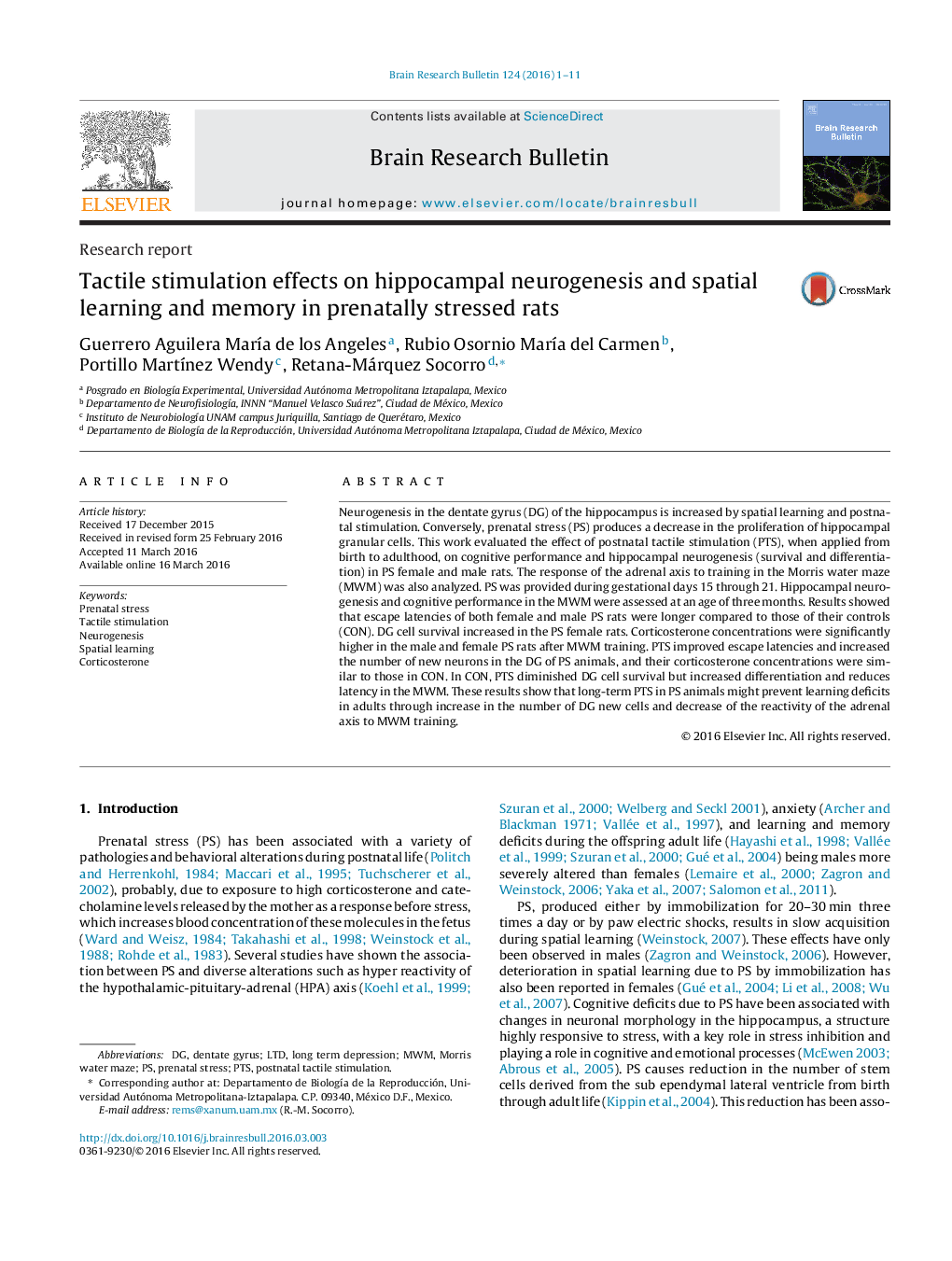| Article ID | Journal | Published Year | Pages | File Type |
|---|---|---|---|---|
| 6261563 | Brain Research Bulletin | 2016 | 11 Pages |
â¢The effects of tactile stimulation on prenatally stressed rats were assessed.â¢Postnatal stimulation improves scape latencies in Morris water maze.â¢Postnatal stimulation increases new neurons in prenatally stressed animals.â¢Postnatal stimulation decreases reactivity of adrenal axis.
Neurogenesis in the dentate gyrus (DG) of the hippocampus is increased by spatial learning and postnatal stimulation. Conversely, prenatal stress (PS) produces a decrease in the proliferation of hippocampal granular cells. This work evaluated the effect of postnatal tactile stimulation (PTS), when applied from birth to adulthood, on cognitive performance and hippocampal neurogenesis (survival and differentiation) in PS female and male rats. The response of the adrenal axis to training in the Morris water maze (MWM) was also analyzed. PS was provided during gestational days 15 through 21. Hippocampal neurogenesis and cognitive performance in the MWM were assessed at an age of three months. Results showed that escape latencies of both female and male PS rats were longer compared to those of their controls (CON). DG cell survival increased in the PS female rats. Corticosterone concentrations were significantly higher in the male and female PS rats after MWM training. PTS improved escape latencies and increased the number of new neurons in the DG of PS animals, and their corticosterone concentrations were similar to those in CON. In CON, PTS diminished DG cell survival but increased differentiation and reduces latency in the MWM. These results show that long-term PTS in PS animals might prevent learning deficits in adults through increase in the number of DG new cells and decrease of the reactivity of the adrenal axis to MWM training.
